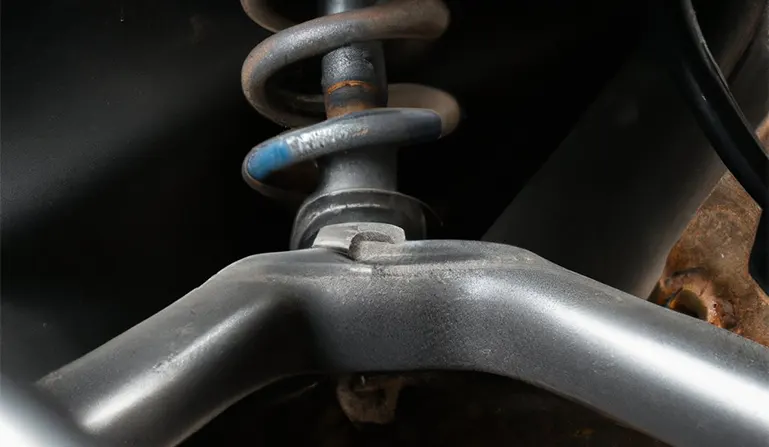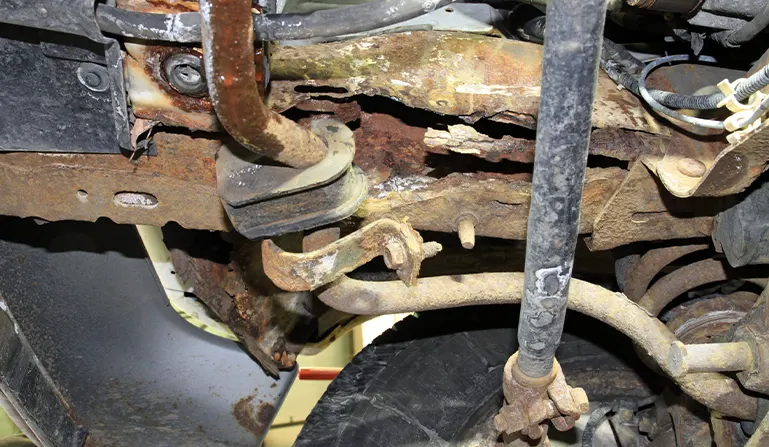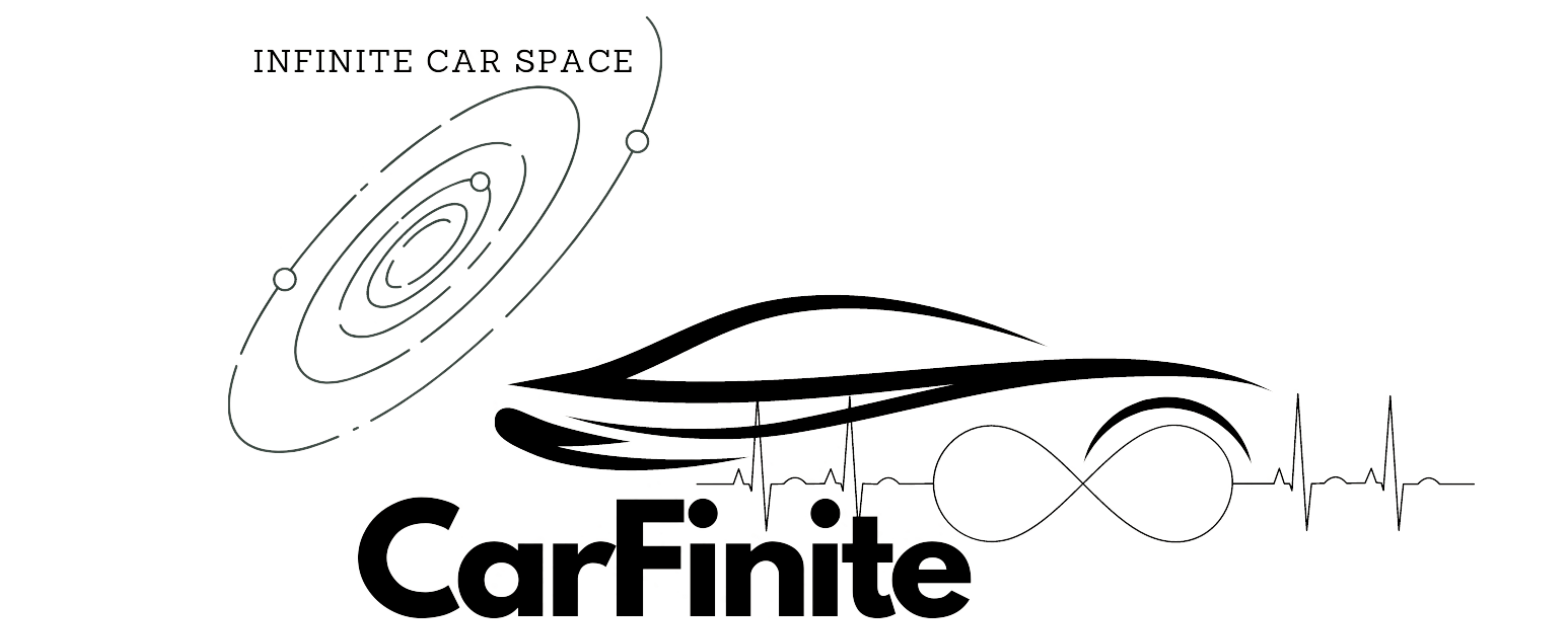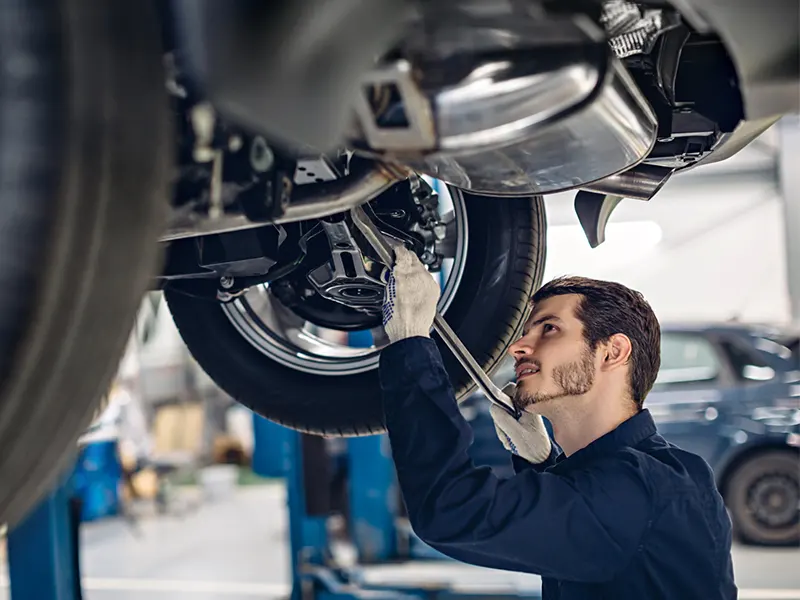The importance of sway bars and links cannot be overstated when it comes to vehicle stability and safety.
These components play a critical role in maintaining balance and stability, particularly during high-speed turns and sharp maneuvers. Let us learn more about sway bars and links.
What are sway bars and links?
A sway bar, also known as an anti-roll bar, or stabilizer bar, is a long, thin metal rod. It runs from one side of the suspension to the other.
Sway bar links connect the outer end of the sway bar to the suspension, transmitting the force generated by the bar to the rest of the vehicle. The links are made of metal rods with ball joints at either end. The ball joints allow for flexible movement, which is essential for proper suspension function.
Sway bar is designed to limit the amount of roll, or leaning, of the vehicle’s body as it turns. The bar works by applying a counter force that resists the body roll and keeps the vehicle level, which results in improved handling and a more stable ride.
Most cars have one sway bar in the front and another one in the rear suspension. Some sports cars have thicker sway bars for better stability. The below photograph shows sway bars and links in a car.

Do all cars have sway bar links?
Yes, most cars are equipped with sway bar links as they are integral components in providing stability and improved handling during turns.
However, it’s worth noting that while the majority of modern vehicles, particularly those designed for on-road use, incorporate sway bars in their suspension systems, certain specialized or older vehicles may lack them, depending on the design and intended use of the vehicle. Consequently, while sway bar links are commonplace, they are not universal across all vehicle types and models.
What are symptoms of bad sway bar links?
Understanding the symptoms of failing sway bars and links, such as distinctive noises from the suspension and altered vehicle performance, is crucial for maintaining optimal vehicle safety and handling.
Regular mechanic inspections and timely replacements of worn-out sway bar links enhance vehicular stability and minimize on-road risks. Here are the symptoms of failing sway bars and links:
1. Knocking Noise from the Suspension:
- A prominent symptom of a deteriorating sway bar link is a distinctive knocking sound emanating from the suspension, especially noticeable when traversing over road bumps at a slow speed.
2. Occurrence of Creaking Sounds:
- In instances where the grease within the sway bar link joints has dried, a creaking noise may be audible as the suspension navigates upward and downward movements.
3. Detachment of the Sway Bar:
- A broken sway bar link can result in the sway bar disconnecting from the vehicle, subsequently leading to an augmentation in body roll and a diminution in the car’s handling capabilities.
4. Subtle Alterations in Vehicle Performance:
- While the shifts in the vehicle’s performance due to sway bar issues can be subtle, they might often escape notice.
5. Mechanic Inspection During Regular Service:
- During routine services, mechanics can scrutinize the sway bar links when the car is elevated on the lift, determining the necessity for replacement by assessing any free play in the links when manipulated upward or downward.
6. Excessive Leaning and Reduced Stability:
- An exceedingly worn-out sway bar link, if separated, can induce the car to lean dramatically during turns, compromising stability and security on the road.
7. Importance of Timely Replacement:
- Ensuring the timely replacement of deteriorated sway bar links is pivotal to uphold the vehicle’s safety. Mechanics can guide you towards the optimal sway bar link for your vehicle and facilitate expert installation.
Can I drive my car with a broken sway bar link?
Yes, you can drive with a broken sway bar link, but it is not advisable due to the inherent safety risks and compromised vehicle stability. A damaged sway bar link directly impacts the car’s handling and stability, especially when turning or navigating uneven surfaces, by allowing excessive body roll and potentially reducing the driver’s control over the vehicle.
Furthermore, persisting to drive in this condition could exert additional stress on other suspension components, potentially leading to further damage and necessitating subsequent repairs.
Therefore, while it is possible to drive under these circumstances, prioritizing a professional mechanic’s assessment and performing the necessary repairs or replacements is crucial to maintaining safe and optimal vehicle operation.

Is it necessary to replace both the swear bar and links?
Replacing both is not needed if either the sway bar or the link is in good condition. In most instances, both links wear at the same rate. If the sway bar link is old, it may be difficult to remove without damaging it.
How to replace sway bars?
Follow these steps below to replace the Sway Bars in your car.
- Elevate and Secure the Vehicle:
- Use a hydraulic jack to lift the vehicle off the ground.
- Place jack stands under the vehicle to ensure stability and safety.
- Remove the Wheels:
- Utilize a lug wrench to loosen and remove the lug nuts.
- Take off the wheels to access the sway bar easily.
- Detach Sway Bar Links and Bushing Brackets:
- Locate the sway bar links and bushing brackets connected to the suspension system.
- Use a socket wrench to remove the bolts holding the sway bar links and bushing brackets.
- Remove the Sway Bar:
- Carefully extract the sway bar from its position, paying attention to any resistance from attached components.
- Ensure all connections and mounts are free before fully removing the sway bar.
- Install the New Sway Bar:
- Position the new sway bar in place, aligning it with the mounting points.
- Ensure the sway bar is oriented correctly to avoid any functional issues.
- Reattach Components:
- Securely fasten the sway bar links and bushing brackets back onto the sway bar using a socket wrench.
- Ensure all bolts are tightened to avoid any loose connections.
- Replace the Wheels and Lower the Vehicle:
- Reattach the wheels, securing them with the lug nuts.
- Use the hydraulic jack to carefully lower the vehicle to the ground.
- Final Check:
- Perform a visual inspection to ensure all components are securely attached.
- Take a short test drive to confirm the successful installation of the new sway bar, paying attention to the vehicle’s handling and stability.
Keep in mind to prioritize safety by utilizing appropriate tools and adhering to vehicle lifting guidelines. If unsure, seek professional assistance to replace the sway bar effectively.
Conclusion
Understanding the pivotal role of sway bars and links in maintaining vehicle stability and safety is crucial for every car owner and driver. These components, while often overlooked, significantly influence the handling and balance of the vehicle, particularly during turns and on uneven terrains. Whether it’s recognizing the symptoms of failing sway bars and links, such as knocking or creaking noises and altered vehicle performance, or understanding the necessity and process of replacement, being informed helps in ensuring a safe and optimal driving experience.
For more insightful and valuable facts about car maintenance and handling, explore the CarFinite Blog.

John Smith, a Los Angeles-based car specialist and automotive writer, boasts over 20 years in the industry. With a background as a master technician and a decade-long writing stint at notable automotive publications, John now shares his expansive knowledge on CarFinite, simplifying car maintenance for readers.

